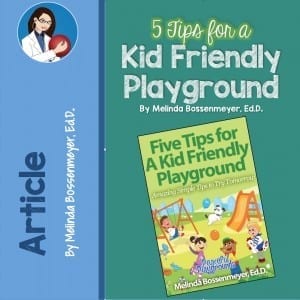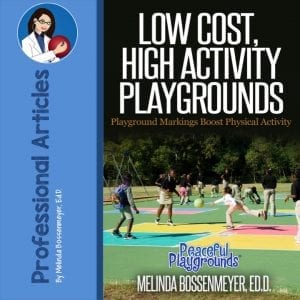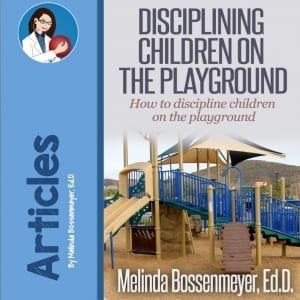Schoolwide Discipline: What Works
by Dr. Melinda Bossenmeyer, The Recess Doctor

Schoolwide Discipline: What Works?
In an election year, it is important to acknowledge that for approximately 20 years, the Annual Gallup Poll of the Public’s Attitudes toward the Public Schools has identified school wide discipline was one of the most serious problems facing the nation’s educational system.
Some teachers and administrators often agree with parents that discipline issues result in a loss of instructional time and thus, an interruption in learning.
Other schools, however, it seems, have found the magic formula to orderly classrooms and a safe emotional and physical environment for learning.
Which school wide practices lead to disarray and which ones lead to order in student discipline? In this article, school wide disciplinary practices and student behavior outcomes will be reviewed.
- Prevention
Below is a list of school wide discipline practices that lead to orderly schools and discipline. A school wide commitment to establishing and maintaining appropriate student behavior that emphasizes a focus on student learning.
- High expectations for behavior.
- Clear and broad based rules. Schools that disseminate rules and procedures ensure that both students and staff know what is acceptable and what is not.
- School climate of concern. Teachers and administrators take an interest in students including their problems, achievements, and extracurricular activities.
- A visible principal. Principals in orderly schools are visible in hallways, classrooms and are generally accessible to parents, teachers, and students.
- A delegation of Authority. Principals deal with severe infractions, and teachers and other staff handle less severe matters. Staff development for classroom management is available for staff.
- High parent involvement. Well run schools with orderly students have high levels of parent and community involvement. There is an understanding of a “shared” responsibility for student success.
Enforcing School Rules
Even in orderly school environments, discipline issues will still arise and must be addressed. The list of practices below is supported by research.
- Punishment. Punishment when necessary should be commensurate with the offense. Effective punishment consists of depriving students of privileges.
- Encourage Positive Behavior. When discipline is necessary, it should be delivered in a supportive tone with emphasis on “what to do” differently the next time the situation occurs.
- Counseling if needed. For reoccurring problems, it may be necessary to bring in a counselor who can observe the child and instruct the student in personal responsibility strategies and goals and appropriate consequences when these strategies and goals are not met.
- Home-School Reinforcements. When parents reinforce at home with positive rewards based on behavior at school, student behavior often improves.
Playground Discipline
Many problems occurring at school start on the playground or during “transition” periods of the school day.
When walking from class to the library or to the lunchroom, sometimes it is difficult for a teacher to supervise students in these transition environments.
The playground also can contribute to a host of problems, again due to multiple issues.
Peaceful Playgrounds research has identified 5 areas contributing to discipline problems on the playground.
Premeditating these problems lead to a more orderly and safe environment for students.
Problems Occurring on Most Playgrounds.
- Students lack problem-solving skills. Students should be taught problem-solving strategies. For example, they can “walk away and find a new game”, or they can play a game called “rock, paper, scissors,” to resolve a conflict.
- Playground Rules. Just as in the classroom, establishing playground rules and procedures for safe play are critical to ensuring an orderly and safe outdoor environment.
- Equipment. Students need a variety of outdoor play equipment like balls, bean bags, jump ropes etc. in order to participate in recess games. Peaceful Playgrounds research indicated that children involved in games have fewer discipline problems.
- Expectations. Consistent expectations for student behavior must be established and communicated with students, parents, and staff.
- Designs. Most elementary school playgrounds lack enough game markings and activities to keep students involved in game play. It has been found that children are pulled to colorful game markings and as a result, they are more physically active and engaged in game play.
Schools adhering to the above-identified school wide discipline practices can expect they will reclaim valuable instructional time and enjoy the benefits of a well disciplined smooth running school environment.
Cotton, Kathleen, School wide and Classroom Discipline Dec. 1990, NWREL
For a deeper dive into resources for Recess and Physical Education visit our Content Library. It’s FREE.
Also Check out our Online Bullying Prevention Course for Teachers.






